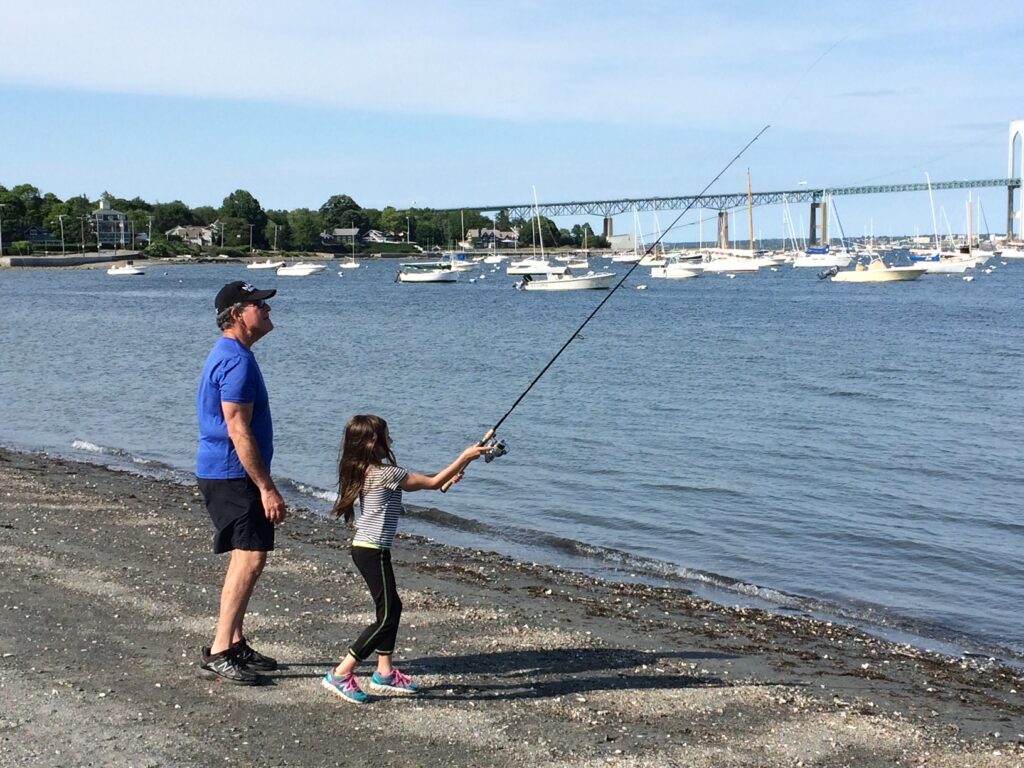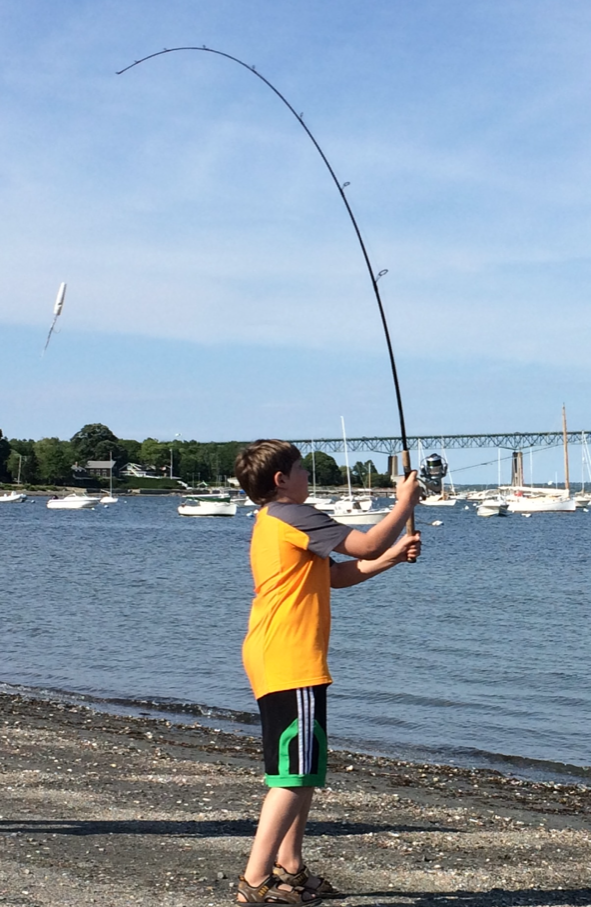As a youth, I spent my summers at Long Beach, New York, on the south shore of Long Island. No one in my family fished, and I eventually became a fairly competent surf fisherman through careful observation, trial and (frequent) error, and some very infrequent mentoring by an older sharpie. I cut my teeth on conventional gear, moved on to spinning tackle, and about thirty years and two cross-country moves later, I taught myself to fly cast.
Our grandson and granddaughter love to visit my wife Jeane and me in Westerly, and to fish often on the Fly ‘n Spear. As it came time for them to graduate from bottom fishing for scup to casting lures for stripers and blues on the reefs, I wanted to help them become proficient casters. I put together a seven count methodology for casting spin tackle that was easy for them to master and produced fine casts in fairly short order. We practiced on a quiet beach and counted out loud together at each step. Here’s the synthesis:
- Grasp the rod with your index finger ahead of the reel seat. Position the rod slightly away from your body, not tucked in tight to your body.
- Make sure the lure is overhanging the rod tip by about two feet and that the bail is properly positioned in the vertical alignment.
- Open the bail with your free hand,
- Grasp the line with the index finger or your rod hand.
- With your free hand, grasp the rod near the butt of the rod handle. Now look behind you to make sure there are no people or obstructions with which you could possibly make contact.
- Bring the rod back over your shoulder and cast it forward using one speedy, continuous motion, back and then immediately forward, with wrist snap, releasing the line from your index finger when the rod is in about the 10 o’clock position on its forward motion. Power comes from pulling down and in rapidly with the hand that is grasping the rod butt and not from pushing forward with the hand that is grasping the rod at the reel seat.
- Remove your free hand from the rod butt, use it to close the bail, and then begin reeling.
Over the years, as the grandkids’ friends or other novice children came to fish with me, I found that it was often even better to start them out with just a rod, no reel, and focus mainly on the rod and hand motions described in Count 6. Once that’s mastered, we add a reel and begin the full seven count training.
This method works with adult novices, as well. The key to success seems to be breaking down the cast into its elements and counting off each step together and out loud until a fluid rhythm develops.

